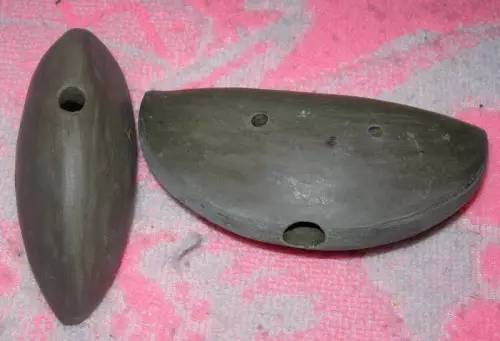The king of folk music of the Zijun people of the Yi nationality - Awu
Zijun people are good at singing and dancing, and the king of folk music should use the musical instrument "Awu" and "Awu" tune "Bulali" as the most representative, which has been more than 3,500 years ago.
"Awu" is a pure hand-made clay musical instrument with primitive and simple craftsmanship. It is called "living fossil of ancient human musical instruments".

The production method of "Awu" is as follows: use colloidal pond mud and dry it in the sun, put it in a mortar and crush it, use a sieve to remove impurities, add rice soup and knead repeatedly, and then take the mud according to the size of the "Awu" to be made. Put the ball on the knee, contract the calf so that the calf and the knee form a vertical angle, tap the mud ball on the knee into a concave circle with the same thickness with the palm, remove the concave circle sheet, and fold it with your hands (fold in half) Glue it to make it look like a "dumpling". Use a brown wire to open a blow hole with a diameter of about 2 cm to 3 cm at the upper edge of the middle of the "dumpling", and then use a small wooden stick to open two symmetrical sound holes in the middle of the front and abdomen. , Scrape it smooth with a bamboo piece, and play it after drying in the shade.
"Awu" can be big or small. The big sound is thick, full and deep; the small sound is bright, distant and penetrating. The production of "Awu" is mainly based on family and teacher's inheritance. With the impact of Han culture and modern civilization, this traditional musical instrument, which embodies the wisdom of the Yi people for a century, is facing the dilemma of losing its skills.
 渝公网安备 50010702504639号
渝公网安备 50010702504639号